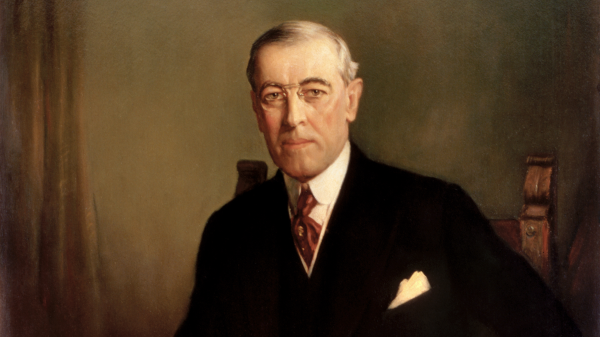Introduction
The drama of human life often turns on a paradox: strength must fail before true wisdom appears, ambition must collapse before higher purpose emerges, and self must die before new life begins. This theme, captured in the Christian notion of dying to oneself, has analogues in other cultures and traditions. To “come to the end of oneself” is to confront the insufficiency of human striving, where personal ambition, pleasure, or knowledge proves unable to resolve life’s deepest questions.
This essay examines five figures—the Buddha, King Ashoka, Augustine of Hippo, Leo Tolstoy, and Francis of Assisi—each of whom represents a historical moment when human endeavor collapsed into futility, and transformation was born from that collapse.
1. The Buddha: The Middle Path at Bodh Gaya
Siddhartha Gautama, the prince of the Shakya clan, was born into luxury and shielded from suffering. Yet once exposed to sickness, aging, and death, he abandoned royal privilege to seek liberation from suffering. He embraced extreme asceticism, starving his body and practicing severe disciplines. For six years he reduced himself to skin and bone, hoping that self-mortification would open the door to truth.
Yet this effort brought no peace. According to Buddhist tradition, he nearly died of starvation and realized that both indulgence and asceticism were futile. It was in this state—at the end of self-effort—that he sat beneath the Bodhi Tree at Bodh Gaya, resolving not to rise until he had found enlightenment.
Here Siddhartha encountered what later tradition described as the temptation of Māra, the embodiment of desire and fear. Having exhausted human striving, he ceased depending on his own willpower and opened himself to a new insight: the Middle Way. Enlightenment came not through self-annihilation, nor through self-indulgence, but through transcending the illusion of permanence and selfhood altogether.
Thus, the Buddha came to the end of himself in India, in the fifth century B.C., not as defeat but as breakthrough. His personal collapse became the foundation of a world religion, emphasizing that liberation begins when human striving is renounced.
2. King Ashoka: The Futility of Conquest
Ashoka, the third emperor of the Maurya dynasty, was one of history’s most formidable rulers. His empire stretched across most of the Indian subcontinent, consolidated through military campaigns. The zenith of his conquest was the Battle of Kalinga (262–261 B.C.), where tens of thousands were slaughtered and many more deported.
Standing over the aftermath, Ashoka experienced what might be described as his “Kalinga moment.” He saw not triumph but horror: villages burned, families destroyed, and his subjects broken. Ancient inscriptions record his remorse. In the Edicts of Ashoka, he confessed that the slaughter weighed heavily on him and that conquest by force was a dead end.
At that battlefield, Ashoka came to the end of himself. Military glory, once the measure of imperial success, was revealed as vanity. His grief drove him to embrace Buddhism, renounce aggressive warfare, and adopt dhamma-vijaya—“conquest by righteousness.” He dedicated the remainder of his reign to moral governance, spreading Buddhist ethics across his empire and beyond.
The end of self for Ashoka was a political as well as personal transformation. It signaled the shift from imperial ambition to spiritual service, from conquering lands to nurturing hearts. History remembers Ashoka less for his wars than for his pillars and edicts, bearing witness that true greatness was found not in domination but in renunciation.
3. Augustine of Hippo: The Garden of Milan
By the fourth century A.D., Augustine had pursued every worldly ambition. He mastered rhetoric, sought academic prestige, and pursued sensual indulgence. Though brilliant, he was restless, driven by a heart unsatisfied. He dabbled in philosophies—Manichaeism, skepticism, Neoplatonism—yet none resolved his turmoil.
In his Confessions, Augustine describes his crisis vividly. Though intellectually convinced of Christianity, he lacked the will to surrender his passions. He wanted purity, yet clung to lust; he wanted peace, yet remained enslaved to ambition. He prayed, “Grant me chastity and continence, but not yet.”
The breaking point came in a garden in Milan, in 386 A.D. Tormented and weeping, Augustine threw himself under a fig tree, confessing that he could not master himself. At that moment he heard a child’s voice chanting, “Tolle lege, tolle lege”—“Take and read.” Opening Scripture, he read Romans 13:13–14, which called him to abandon revelry and put on Christ. This was the decisive moment: the end of Augustine’s self-striving, and the beginning of surrender to God’s grace.
From that collapse was born one of Christianity’s greatest theologians. Augustine’s theology of grace—that humans cannot save themselves but depend wholly on God—was forged in the crucible of his own failure. His personal “end of self” became the foundation of Western Christian thought, echoing Paul’s insistence that God’s strength is made perfect in weakness.
4. Leo Tolstoy: A Confession in Russia
Nineteenth-century Russia produced one of literature’s towering geniuses: Leo Tolstoy. Author of War and Peace and Anna Karenina, Tolstoy enjoyed wealth, fame, and the admiration of the world. Yet by the 1870s he faced a profound existential crisis. Despite achieving every measure of success, he was haunted by the specter of death and the meaninglessness of life.
In A Confession, Tolstoy recounts how he contemplated suicide daily. Philosophy, science, and art had brought him no lasting peace. Rationalism answered none of his deepest questions: Why live? Why not kill myself? He realized that intellect alone could not supply the meaning he sought.
It was in observing the faith of Russian peasants that Tolstoy came to the end of himself. Their simple trust in God, unshaken by suffering or poverty, contrasted with his intellectual despair. He recognized that meaning lay not in human achievement but in surrender to divine truth. Though his relationship to Orthodox Christianity remained complicated, this shift transformed his later life. He abandoned aristocratic luxury, embraced simplicity, and became a moral teacher advocating nonviolence and justice.
Tolstoy’s end of self illustrates the limits of reason and fame. Neither brilliance nor beauty could sustain life. It was only in humble faith that he found renewal. His crisis echoes Augustine’s confession: human strength, even in genius, is insufficient without God.
5. Francis of Assisi: From Knight to Fool for Christ
Born into wealth in 1181, Francis of Assisi dreamed of glory as a knight. He joined military campaigns, but after a failed battle and a year in captivity, he returned home broken and sick. Still restless, he prepared for another campaign, but in a dream God asked him: “Who can do more for you, the servant or the master?” Francis realized his ambitions were hollow.
His decisive moment came in the dilapidated church of San Damiano. Kneeling before the crucifix, he heard Christ speak: “Rebuild my church.” Francis abandoned his wealth, stripped himself of worldly ambition, and embraced poverty. He came to the end of himself—not in despair, but in surrender.
From this surrender flowed a radical new life. Francis preached simplicity, cared for lepers, and lived as a “fool for Christ.” His transformation turned medieval assumptions of honor and power upside down. Whereas Augustine’s collapse revealed the futility of intellect, Francis’ collapse revealed the futility of wealth and status.
Francis’ end of self birthed a movement that revitalized medieval Christianity, reminding the Church that true riches lie not in gold but in Christ alone.
Conclusion: The Pattern of Surrender
These five figures—Buddha, Ashoka, Augustine, Tolstoy, and Francis—represent diverse cultures and traditions, yet converge on a common truth: human striving has limits. Whether in the pursuit of enlightenment, empire, pleasure, genius, or honor, each reached a breaking point where ambition proved vain. Transformation arose only when self was surrendered.
For the Buddha, it was the collapse of asceticism; for Ashoka, the futility of conquest; for Augustine, the bondage of lust; for Tolstoy, the emptiness of genius; for Francis, the vanity of wealth. Each in their own way embodies the paradox expressed in Scripture: “Whoever loses their life for my sake will find it” (Matthew 16:25).
To come to the end of oneself is not annihilation but beginning. It is the threshold where weakness becomes strength, failure becomes wisdom, and self-destruction becomes self-transcendence. History bears witness that only when ambition falters can grace, truth, and transformation take root.
Footnotes
-
Ariyapariyesanā Sutta (The Discourse on the Noble Quest), Majjhima Nikāya 26. Pāli Canon. Describes the Buddha’s pursuit of extreme asceticism and his subsequent realization of the Middle Way.
-
Vinaya Pitaka, Mahāvagga I.6. Pāli Canon. Recounts the episode at Uruvela where Siddhartha, after abandoning self-mortification, accepts milk-rice and regains strength before enlightenment.
-
Ashoka’s Rock Edict XIII (3rd century B.C.), in Romila Thapar, Ashoka and the Decline of the Mauryas (Oxford: Oxford University Press, 1961). Contains Ashoka’s remorse after the Battle of Kalinga and his commitment to dhamma-vijaya (“conquest by righteousness”).
-
The Edicts of Ashoka, translated by N.A. Nikam and Richard McKeon (Chicago: University of Chicago Press, 1959). Provides direct English translation of Ashoka’s inscriptions.
-
Augustine of Hippo, Confessions, Book VIII, chs. 11–12. Describes Augustine’s crisis in the garden at Milan, his struggle of will, and the “tolle lege” moment.
-
Augustine of Hippo, Confessions, Book VII, ch. 21. His prayer for chastity “but not yet,” illustrating his divided will.
-
Leo Tolstoy, A Confession (1882), trans. Aylmer Maude (London: Oxford University Press, 1933), chs. 4–6. Details his existential crisis, contemplation of suicide, and recognition of the peasants’ faith.
-
Leo Tolstoy, A Confession, ch. 9. His conclusion that meaning was found not in philosophy but in faith.
-
The Testament of St. Francis (1226), in Francis of Assisi: Early Documents, ed. Regis J. Armstrong, J.A. Wayne Hellmann, and William J. Short (New York: New City Press, 1999), Vol. 1, pp. 124–127. Francis recounts his conversion and renunciation of wealth.
-
The Legend of the Three Companions (1240s), in Francis of Assisi: Early Documents, Vol. 2. Provides the San Damiano crucifix vision: “Francis, go and rebuild my church.”




